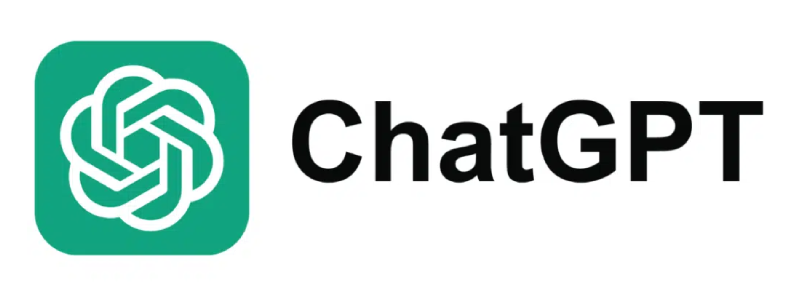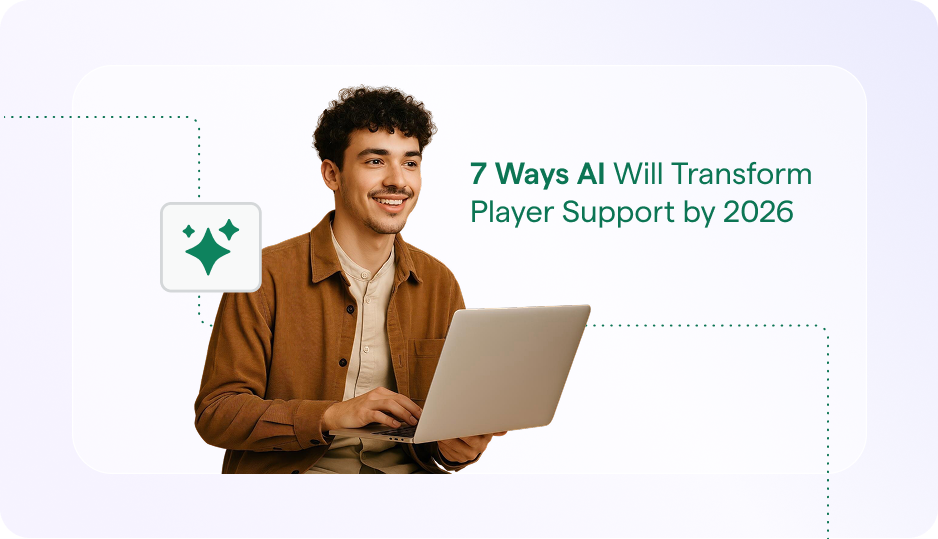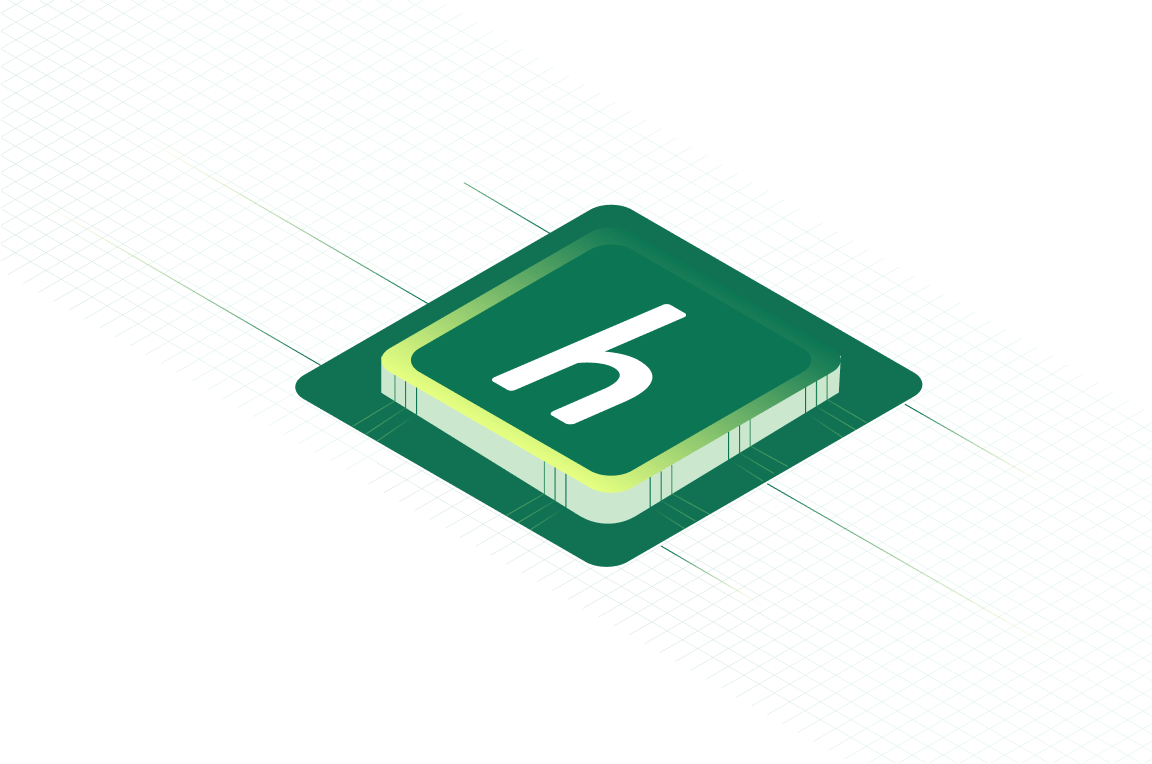Your players aren’t just comparing your game to other games anymore, they’re comparing your support to every flawless digital experience they’ve ever had. They expect the same smoothness they get when unlocking achievements: fast, intuitive, and frictionless.
So when something goes wrong — like a missing reward, a bug in the latest patch, or a failed in-app purchase — they don’t want to wait in line. They want answers now.
But while your dev team is crunching post-launch bugs and your support team is swamped with tickets, players are bouncing off to the next title—frustrated, unheard, and unlikely to return.
Meanwhile, studios that have embraced AI-powered support are resolving 58% of issues instantly, without needing an agent to step in.
The real question isn’t “Should we bring in AI?” it is “How soon can we deploy it before our players hit uninstall?”
Breaking Down the Causes of High Ticket Volume
- Repetitive “how-to” and account-related questions: A huge chunk of tickets come from players needing help with basic tasks: how to reset a password, where to find a feature, or how to troubleshoot minor bugs. These are low-effort questions eating up high-effort resources. AI-driven self-service options like in-app help widgets and smart FAQs can handle these instantly, freeing agents to focus on high-value problems.
- Inconsistent in-game issue reporting: When players report bugs through email, forums, or social DMs, it’s chaos for support teams. Fragmented channels slow down resolution and blur the full picture. In-game issue reporting — standardized and contextual — lets players flag problems exactly where they happen. That means faster triage, clearer priorities, and better coordination across teams.
- Language and time-zone challenges in global communities: Support expectations don’t pause for the clock — or for language barriers. Global players want native-language help, on demand. AI translation engines now deliver real-time, localized responses across support channels, while automation ensures coverage across time zones.
The result? Happier players, smoother operations, and no need to chase the sun with live agents.
Ways to Reduce Support Ticket Volume with AI
AI in support isn’t just some patch upgrade. It’s a full-blown expansion pack that’s reimagining how studios interact with players. AI is here to keep players in the game and support teams out of crisis mode.
The shift is already happening. Between 2022 and 2023, automation adoption in gaming jumped from 82% to 85%. That’s not a trend. That’s a revolution in progress.
1. From Firefighting to Foresight: Let AI Handle the Plot Twists
Traditional support is like showing up to a boss fight with no potions. You wait for players to run into problems, hope they report it nicely, and then toss them into a ticket queue that feels more like a side quest than actual help.
AI flips the game.
Instead of waiting for tickets to pile up, AI watches what’s happening in real time—spotting stuck players, sniffing out bugs, and flagging issues before they turn into “Why is my game broken?” emails.
A player’s struggling with a tricky level (you know, that one). Instead of rage-quitting or spamming support, AI steps in with a tip or offers to tweak the difficulty—automatically.
Hothead Games implemented Helpshit’s customer support solution by 50% with monthly issues dropping from 12,000 to 6,000. No devs pulled from their roadmap. No all-hands fire drill.
And it works across the board. Helpshift data shows the top three ticket-generators are:
- Game-breaking bugs (53%)
- Login issues (45%)
- Missing rewards (39%)
Modern AI systems recognize these patterns early. They can auto-resolve issues on the spot or loop in your dev team before things spiral. It is preventive support: less reacting, more anticipating. Like having a game master that patches the problem before your players even hit “Help”.
2. Self-Service That Doesn’t Suck (Anymore)
Modern AI has turned self-service into a power-up players actually want to use. Instead of clunky FAQs and generic help pages, today’s AI-powered systems are built to be smart, fast, and hyper-relevant.
Here’s what that looks like:
- Contextual assistance: The AI knows where the player is, what they’ve done, and what’s likely gone wrong—so it can offer help right there, right then
- Natural language understanding: Players don’t have to type like robots—whether they say “my loot’s gone,” “missing gems,” or “uhhh where’s my stuff,” the AI gets it
- Learning on the fly: These systems learn from every solved issue, so support keeps getting smarter with each interaction
Paymentshield had its insurance administrators moonlighting as their customer support representatives as well. The process was time-consuming and often resulted in really long support queues; it was also detracting the administrators from their primary roles.
With Helpshift’s Smart Intents, Paymentshield implemented 30 automated, user-facing bot journeys that guided users through a self-service workflow. This helped the company see a 57% reduction in average cancellations and a 6% overall increase in conversions.
Helpshift’s data shows that AI-assisted in-app messaging now beats every other support channel in both speed and player satisfaction. And it’s no surprise — 43% of players say they’d rather get instant help and jump back into the game than wait for a human to respond.
It’s the support sidekick your players never knew they needed but now won’t want to play without.
3. Pattern Recognition: The Ultimate Ticket-Deflection Power-Up
Here’s something your support team will love: fewer tickets.
No, not because players suddenly stopped having issues (we wish), but because AI is now smart enough to spot trouble before it hits your inbox. Think of it like an in-game scout that’s constantly scanning for ambushes—and neutralizing them before anyone takes damage.
AI doesn’t just catch repeat issues—it adapts support based on who the player is. Helpshift’s research breaks it down like this:
- Explorers (36%) poke around every corner of the map. They need discovery-based guidance
- Competitors (23%) are here to win. They want quick, technical fixes to stay ahead
- Storytellers (15%) live for lore. Support that speaks their language keeps them engaged
By recognizing these play styles, AI can personalize help—like sending a competitor straight to a fix-it guide, while nudging a storyteller with a gentle hint that stays in character.
The bottom line? Pattern-based deflection isn’t just efficient, it’s downright clever.
4. The Hybrid Advantage: AI + Humans = Support Dream Team
AI isn’t here to bench your support agents, it’s here to level them up. When bots handle the grind (password resets, missing coins, login loops), your human team gets to focus on the real battles: nuanced, complex issues that actually need their creativity and care.
This AI-human combo unlocks three game-changing perks:
- Speed: Routine problems? Solved instantly with automation
- Expertise: Tricky cases? Routed to pros who know exactly what to do
- Continuity: No more “start from the top” moments, AI keeps full context across every player touchpoint
And it works. Jam City’s growing global presence increased the tickets they were getting to ~90,000 and their support system was only human agents via email. With Helpshift, they introduced an in-game searchable knowledge base which helped players find answers to their queries without submitting a support request.
Result? A 90% ticket deflection rate and a 30% reduction in ticket volume compared to the legacy solution.
And it gets better. Helpshift’s data shows that studios using partial automation—where AI handles the early steps and humans step in when needed—see CSAT scores 12% higher than teams going all-in on either manual or fully automated support.
It’s also a smart fix for a long-standing gap in the player experience. While 25% of players rate gameplay as excellent, only 16% say the same about console support. That’s a lot of joy lost in translation.
With AI and human agents teaming up, support finally catches up to the quality of the game—and that’s a win every studio should want.
5. Breaking the Language Barrier: Turn Global Players into Lifelong Fans
Great games travel fast. And when they do, they speak dozens of languages, often faster than your support team can keep up.
Most studios dream of offering round-the-clock, multilingual support. But the reality? Hiring and training agents in 10+ languages is expensive, slow, and nearly impossible to scale. That’s why forward-thinking studios are skipping the translation hustle and going straight to AI-powered multilingual support.
Instead of juggling regional teams or timezone-based queues, AI localization meets players where they are—instantly, seamlessly, and in their own language. It’s not just about words; it’s about building trust without a translator.
Even better, this consistency extends across channels. Whether a player is scanning your help docs, searching Google, chatting in-app, or browsing forums, AI ensures they hear the same voice—clear, helpful, and on-brand.
No more copy-pasting into Google Translate. No more mixed messages across regions. With AI, you don’t just support global players—you build a global community.
What This Looks Like in Action: Results from Real Gaming Companies
Let’s move from theory to practice. AI-powered support isn’t just some shiny tool—it’s already changing the game for studios worldwide. Here’s how two wildly different teams used it to crush their support challenges (and impress their players while they were at it).
| Bytro Handles 17,000 Tickets a Month Without Breaking a Sweat Bytro Labs, makers of Supremacy 1914 and Call of War, were facing every support team’s nightmare: a giant player base, global coverage needs, and a flood of tickets during every game launch or event. By implementing AI-powered support, they didn’t just survive—they leveled up: 1. 67% of all tickets were resolved through automation 2. 24/7 support coverage—without expanding their team 3. 90-second average response time (down from hours!) 4. 17,000 tickets handled each month, like clockwork Their secret sauce? A smart mix of bots for common issues (like account recovery and payments) and humans for the complex stuff. As their support lead put it: “Our agents have transformed from ticket processors into player experience specialists.” That’s not just a metrics win—it’s a total mindset shift. |
| Trailmix Deflects 79% of Tickets with Smart FAQs Trailmix, creators of Love & Pies, faced the classic mobile game challenge: a small team, a fast-growing player base, and too many repetitive questions (looking at you, “Where’s my purchase?”). Instead of scaling their team, they built a powerful Smart FAQ system with AI behind the scenes. The results? 1. 79% ticket deflection rate (yes, you read that right) 2. 63% drop in routine inquiries reaching human agents 3. 3.2x faster resolution for complex issues 4. 92% player satisfaction with automated responses And here’s the kicker: “Players actually preferred instant answers from bots rather than waiting for a human.” Now that’s a plot twist. Trailmix didn’t just cut tickets, they created a self-service engine that gets smarter over time by analyzing failed queries and filling gaps in the knowledge base. It’s like giving your FAQ a brain and a grind set. |
What These Stories Tell Us
It’s not just about saving time or reducing costs (though both studios did). It’s about:
- Speeding up help without sacrificing quality
- Keeping players in the game, not in the ticket queue
- Freeing up agents to be experts, not button-pushers
And it works. Across studios using Helpshift, AI implementation has led to:
- Faster time-to-resolution
- Lower agent workload and burnout
- Higher CSAT scores and retention
This isn’t just a trend—it’s the new normal. And the studios who’ve embraced it? They’re not just keeping up. They’re winning.
Best Practices for Implementing AI in Player Support
Great AI isn’t just plug-and-play; it’s tuned, trained, and constantly improved.
Here’s how to get the most out of it:
1. Start with High-Volume, Low-Drama Tickets
Your agents aren’t here to reset passwords all day. Start by automating the most repetitive, low-complexity questions like: “How do I recover my account?”; “Why can’t I log in?”, “Where’s my purchase?”, etc.
This clears the queue fast and gives your team room to focus on the tickets that actually need human brainpower.
2. Make Your Knowledge Base Bot-Friendly
If your help docs read like a lore dump, your AI won’t know what to do with them. Structure your articles in your knowledge base like this:
- One question, one clear answer
- Use player language, not dev speak
- Keep it short, scannable, and updated regularly
Well-fed bots = smarter responses and fewer escalations.
3. Tweak and Tune with Real Player Feedback
Even the best AI doesn’t get it perfect on day one. Track where:
- Players hit dead ends
- Bots give wrong or vague answers
- Players still ask for a human, even after automation
Use that data to refine your flows, update FAQs, and improve training inputs. Small fixes here = big drops in ticket volume later.
Think of AI support like live ops—it’s never finished, and that’s a good thing. Iterate constantly, listen to your players, and your system will only get sharper over time.
Done right, AI doesn’t just help your team—it makes your support feel like part of the game.
How Helpshift Reduces Ticket Load by Up to 70%
Reducing support tickets in gaming isn’t just about chatbots—it’s about smart, contextual, always-on support that works where and when players need it. Helpshift brings together AI, real-time context, and in-app tools to resolve issues before they even become tickets.
Here’s how it all comes together
1. In-App, Contextual Support That Works Where Players Are
Helpshift integrates directly into iOS, Android, and Unity games, so players never have to leave the game for help. Messaging windows can appear during key events (like failed purchases), and support sessions persist even if the app is closed. It supports push notifications and real-time messaging—even during connectivity drops.
The knowledge system recommends help articles based on real-time actions, like error codes or device type. It supports localization, media-rich articles, and interactive feedback (“Did this help?”). NLP engines surface the most relevant content using semantic search.
Why it reduces tickets:
- Players get help instantly and contextually
- Smart FAQs deflect common queries
- Support happens without interrupting gameplay
2. AI That Supercharges Agents and Automates Repetitive Tasks
The AI Agent Co-Pilot boosts agent productivity with smart reply suggestions, tone analysis, grammar fixes, and auto-generated summaries. It understands multi-intent messages and prioritizes urgent ones based on sentiment.
Helpshift bots guide players through structured flows, using logic trees, custom API calls, and dynamic inputs. They can handle things like refund eligibility, login problems, or granting rewards—instantly and accurately
AI models classify tickets using historical data and real-time context (e.g., device type, app version). Based on this, queries are routed to bots, FAQs, or agents with the right skill sets.
Why it reduces tickets:
- Bots resolve 50–80% of repetitive queries
- Agents work faster with AI assistance
- Accurate classification prevents misrouting
3. Support for a Global Player Base
Built-in multilingual support ensures seamless conversations between players and agents (or bots), with slang handling and privacy-safe translation.
Why it reduces tickets:
- No delays waiting for bilingual agents
- Reduces miscommunications from language barriers
- Enables global scale without proportional headcount growth
4. Seamless Escalation with Full Context Transfer
When bots can’t solve an issue, players are handed off to agents—without losing context. Helpshift’s APIs pass on the entire chat history, player metadata, and sentiment score. Agents can respond in the same in-app window, maintaining a consistent experience.
Why it reduces tickets:
- No duplicate tickets from frustrated users
- Faster agent resolution with full conversation history
- Improved First Contact Resolution (FCR)
5. Analytics and Continuous Optimization
Helpshift’s dashboards track CSAT, deflection rate, issue types, bot performance, and article usefulness. Integrations with tools like Looker or Tableau let teams dig deeper. Alerts flag performance drops, helping teams retrain bots or improve content before problems scale.
Why it reduces tickets:
- Spot trends early (e.g., bugs after updates)
- Optimize support flows based on real data
- Constant improvements to deflection and resolution
Unlike generic support tools adapted for gaming, Helpshift’s AI is trained on gaming-specific interactions, allowing it to understand the unique context and terminology of your players. This specialization is how leading studios are achieving that transformative 70% reduction in ticket volume—not by deflecting issues, but by resolving them instantly through intelligent automation.








